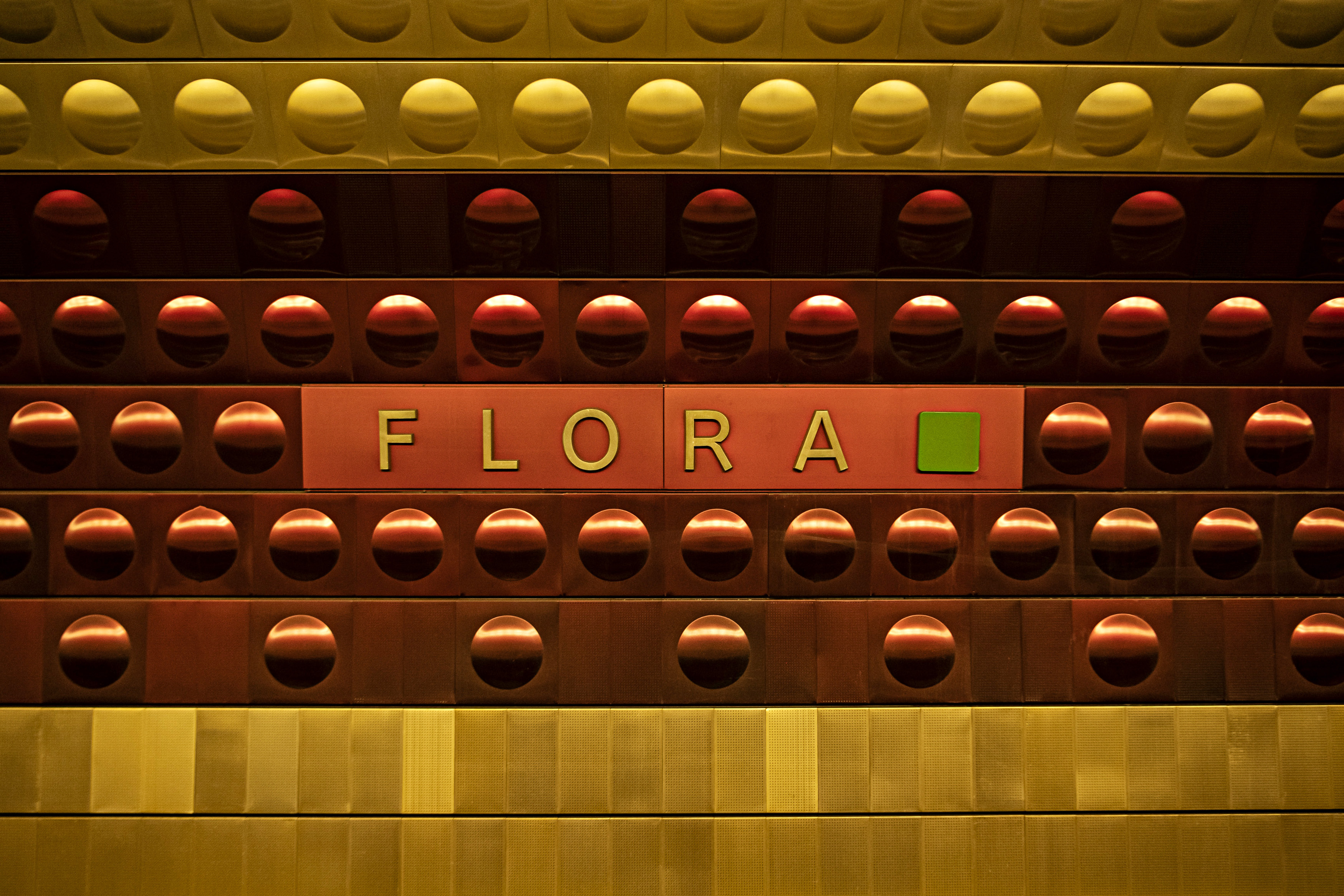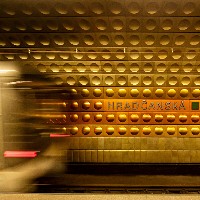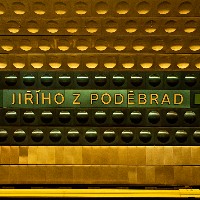Breadcrumbs navigation
The Prague Metro, One of the City's Most Vibrant Elements
When the metro system, with its three well-known color lines, was built, it revolutionized public transport in Prague. It improved the quality of life of the dynamically developing city's inhabitants and became an entirely new dimension that pushed Prague forward. The city became the 44th world metropolis with a metro system, bringing it not only technology that was state-of-the-art for its time, but also unprecedented beauty. The interiors of some stations are considered to be some of the most photogenic in Europe. The Prague metro is therefore a phenomenon with an international dimension and is an inspiration for lovers of both technology and art.
The original idea to build an underground railway in Prague was conceived in 1898 in connection with extensive remediation work in the Old Town. However, concrete steps to implement this idea were not taken until the 1960s, when automobile traffic in Prague was in danger of complete collapse.
Although the oldest line is line C (red line), which opened in 1974 and at the time ran only from Florenc to Kačerov, the best-known is the first section of line A (green line) between Dejvická and náměstí Míru, which opened four years later. Thanks to their unified interior design, using a system of colors and similar materials, the stations look very exclusive and are considered some of the most beautiful in Europe. The station tunnel walls are clad with aluminum moldings shaped like convex and concave lenses (popularly called "breasts" and "anti-breasts") that were designed by the chief architect of the Prague metro Jaroslav Otruba, inspired by pop art. Graphic artist Jiří Rathouský came up with the characteristic colors for each of the individual stations. The aluminum cladding not only has an aesthetic function, but also a practical one - it has the task of dampening the sound waves emitted by the heavy undercarriages of the trains.

The colors of the tiles in each station are symbolic, each having some association with part of Prague in which the station is located. They are linked by a line of champagne-colored tiles, complemented in the middle of the wall of each station by colored stripes in three shades of the base color. The color of the stations was intended to remind passengers that part of line A leads under historically significant sites. For example, the gold color at the Hradčanská station symbolizes nearby Prague Castle, the seat of the Czech kings; the green at Malostranská reflects the gardens located in its vicinity; and the brown in the Muzeum station refers to the city fortifications that once stood there.
A special font called Metron was created for the Prague metro system. It was used not only in the names of stations, but also for its information system.
The metro system is sometimes referred to as a complex living organism that needs electricity, data transfer, water and sewage to live. From its inception, the metro was conceived as a completely independent, autonomous world. In the event of a power outage on the surface, underground life will not stop, as it has its own independent source. In addition, the subway tunnels are designed with a certain slope, and in the event of a sudden power outage, trains can, under certain conditions, reach the next station by gravity so that passengers can disembark safely. The tunnel designers and builders were true masters in their field. Prague is fundamentally different from other European cities due to the uniqueness of its historical center, its geological conditions and terrain configuration, in particular the difference in altitude between the city center and its outskirts.
The historical center is the city's lowest point. While the altitude at the Rudolfinum is 191.5 meters above sea level, the outskirts of the city, where the metro branches out to, lie up to 200 meters higher. For a better idea, it is about one-fifth of the height of Ještěd, halfway up Říp Mountain, or the height of the Vyšehrad promontory. Determining the locations and depths of the lines was especially demanding in the historical core of the city, where emphasis was placed on ensuring that sufficient rock thickness remained between the top of the outer face of the tunnel and the historical buildings on the surface.
Returning to the tunnels and metro stations, the non-public areas of this underground city are equipped with state-of-the-art technologies. The designers also considered energy efficiency and the environment. Today, the metro system's electric trains are much more economical in terms of power consumption than the original ones, which only converted unused electricity into "heat losses". The current trains recoup electricity, leading to significant savings. Under ideal conditions, a large part of the electrical energy generated when one train brakes can be used by another train for starting. Just to give you an idea, the electrical input of one train is about 2.5 MW or 2,500,000 W, equivalent to 200,000 electric kettles.
The safe operation of the Prague metro is ensured by specialized railway and signaling systems, whose innovative technologies are practically ahead of their time. The Prague metro has always been considered a pioneer of new technologies. This also applies to the planned construction of the new D line, which is to operate purely autonomously, without human drivers. This type of transport is already common elsewhere in the world, but in Prague it will be the first and, so far, only computer-controlled line.
The Prague metro is developing dynamically and is something truly worth discovering. There are, for example, inverted "skyscrapers" reaching several floors underground, bomb shelters with operating rooms, medieval Gothic masonry, and many other surprises and points of interest. But we’ll save that for next time.
Fans of the Metro can learn more from publications available for purchase at the DPP fanshop.

References:
Pražské metro - čtvrtá dimenze velkoměsta (The Prague Metro - the Metropolis’ Fourth Dimension), compiled by PhDr. Josef Škorpil and team, Panorama, 1990
Fakta a legendy o pražské městské hromadné dopravě (Facts and Legends about Prague's Public Transport), Pavel Fojtík and team, DPP hl. Prague, 2010

